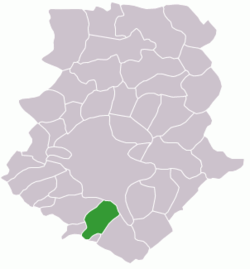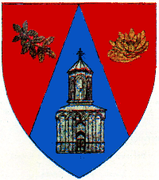Jilava
| Jilava | |
|---|---|
| Commune | |
 Map of Ilfov county with Jilava commune highlighted | |
 Jilava Location in Romania | |
| Coordinates: 44°20′05″N 26°6′20″E / 44.33472°N 26.10556°E | |
| Country |
|
| County | Ilfov County |
| Population (2002)[1] | 11,919 |
| Time zone | EET (UTC+2) |
| • Summer (DST) | EEST (UTC+3) |
| Website | http://www.primariajilava.ro |
Jilava is a commune in Ilfov county, Romania, near Bucharest. It is composed of a single village, Jilava.
The name derives from a Romanian word of Slavic origin (žilav, which passed into Romanian as jilav) meaning "humid place".
In this commune there is an operating prison and also the Fort 13 Jilava.
Fort 13 Jilava

Jilava was the location of a fort built by King Carol I of Romania, as part of the capital's defense system. At a later date, the fort was converted into a prison. It is now a historical monument.
This prison is the site where, on November 26-27, 1940, the Iron Guard authorities of the National Legionary State killed 64 political prisoners as revenge for the previous killing of their leader Corneliu Zelea Codreanu (see Jilava Massacre); it was also here that Ion Antonescu, dictator (Conducător) of Romania during World War II, was executed for war crimes in 1946 and where on 23 October 1971 the serial killer, Ion Rîmaru was executed by firing squad. The prison also was a detention site for political prisoners after the start of Communist rule in Romania.
Coordinates: 44°20′N 26°5′E / 44.333°N 26.083°E
See also
- ro:Penitenciarul cu regim de maximă siguranță București, article in Romanian Wiki about the prison
References
- ↑ Romanian census data, 2002 Retrieved on April 5, 2016.
External links
![]() Media related to Jilava at Wikimedia Commons
Media related to Jilava at Wikimedia Commons
